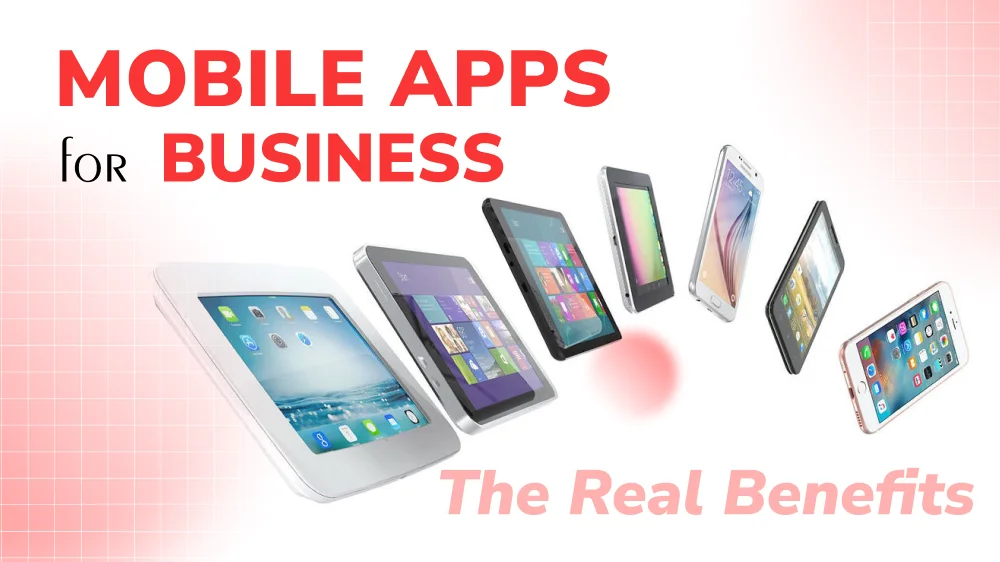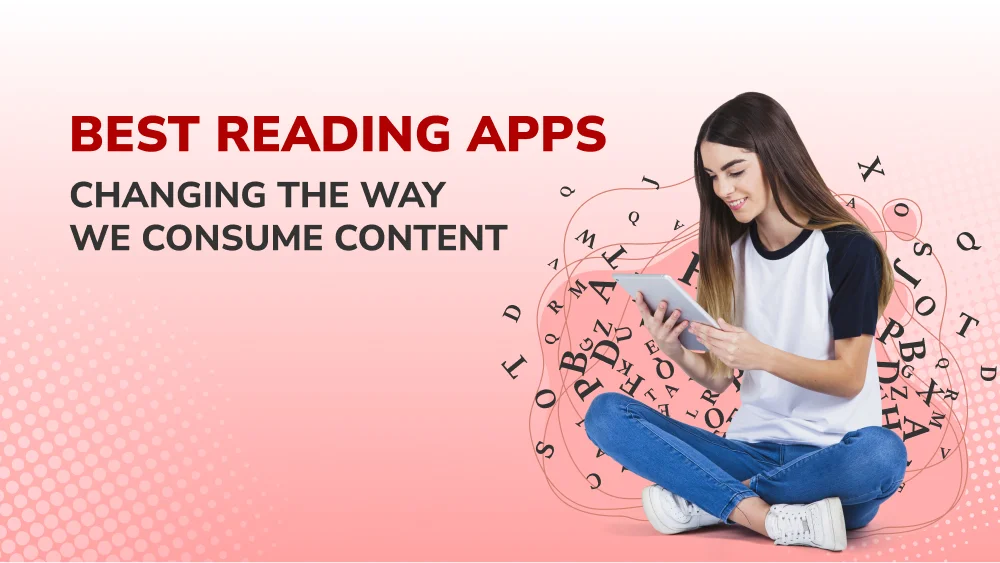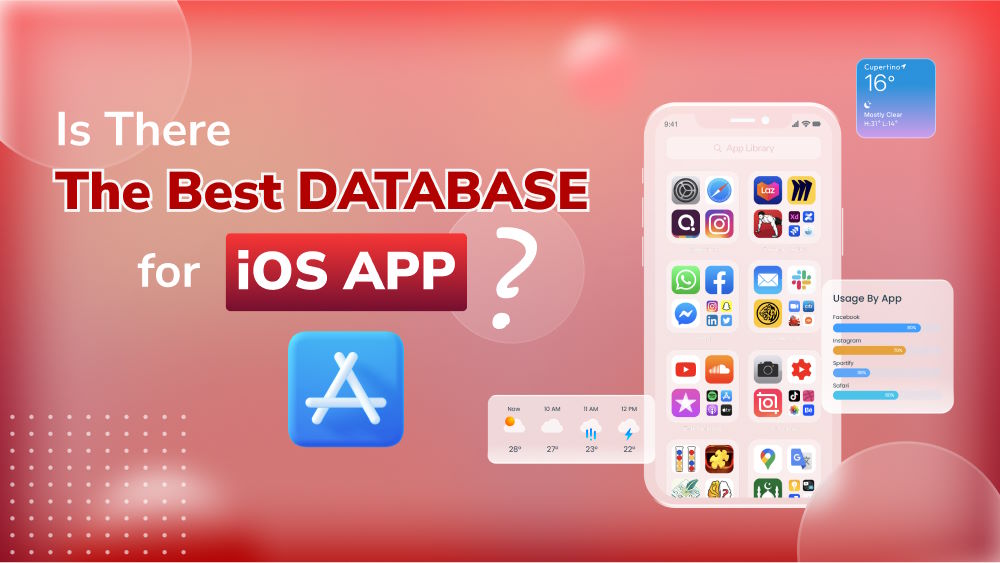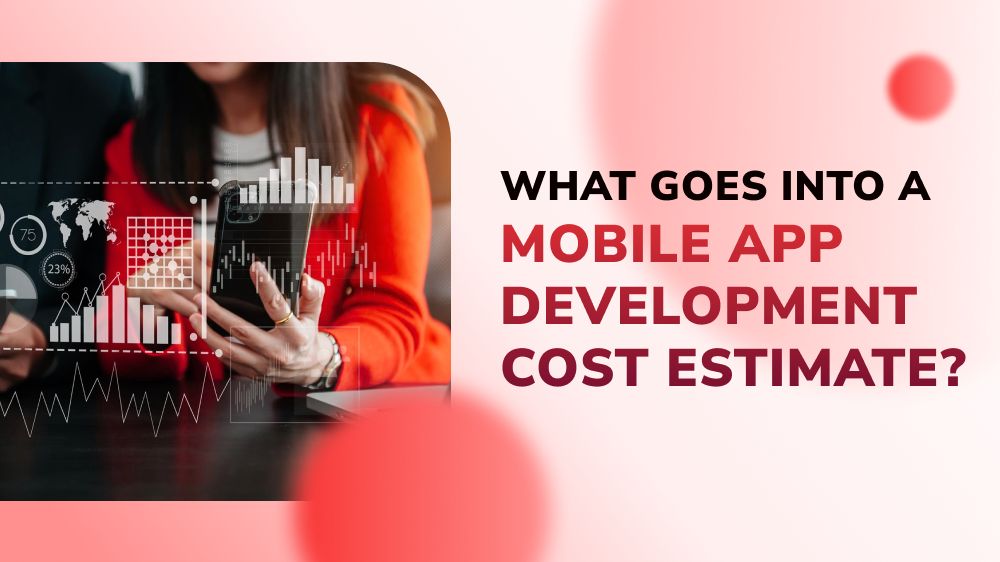
What Goes into a Mobile App Development Cost Estimate?
Planning on outsourcing your mobile app project? Find out what goes into a mobile app development cost estimate and how to choose the right developer.

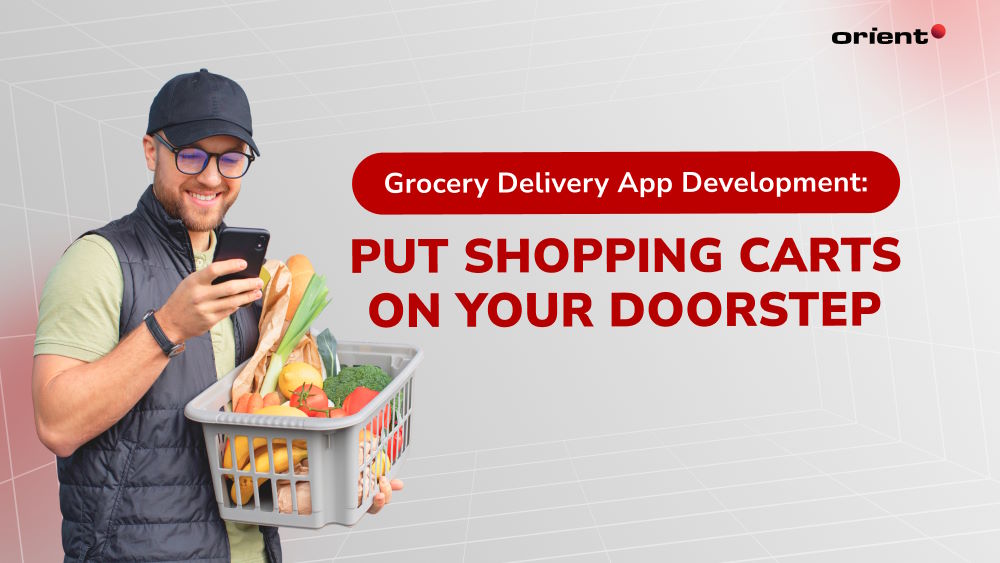
Shopping is an inevitable activity, as the traditional way we come to grocery stores or markets to buy essentials has been deeply ingrained in our routines. But over time, this instinctual routine began shifting under the pressure of modern life. With the rise of technology, the way we shop has drastically changed.
According to recent statistics, the convenience of online grocery delivery apps has become more than a luxury—it’s a necessity. The Online Food Delivery market is anticipated to grow at a CAGR of 10.06% between 2024 and 2028, leading to a predicted market value of US$1.79 trillion by 2028. In the Grocery Delivery market, a revenue growth of 20.3% is anticipated in 2025, and it’s clear that consumers are embracing the digital revolution in shopping.
“Cart to Doorstep” isn’t just a catchy phrase; it’s the new reality of retail. From the palm of your hand to the comfort of your home, online grocery delivery app development is reshaping the way we shop, offering unprecedented convenience and efficiency. As we delve into the world of these transformative apps, we’ll explore how they’re not just meeting demands but driving a shopping revolution—one click at a time. Join us as we unpack the phenomenon that’s taking your groceries from cart to doorstep and transforming the marketplace in the process.
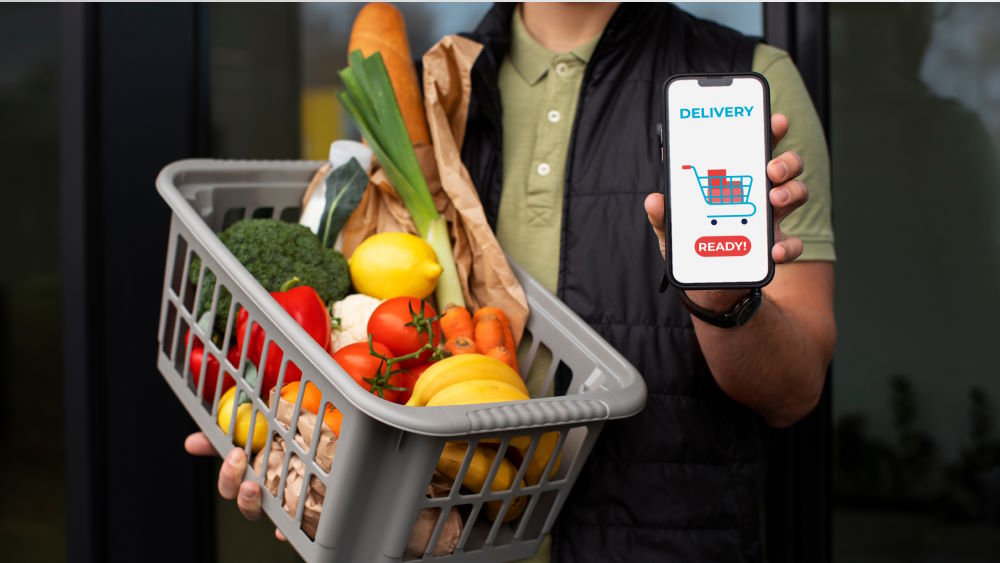
Grocery delivery apps are platforms that enable users to order needed groceries online and have them delivered to their doorstep. These applications offer a convenient way for consumers to shop for groceries without physically going to the store. Users can browse through a variety of products, add them to the virtual cart, and complete the purchase using the app’s payment gateway. The grocery shopping app may also offer features such as real-time tracking of orders, personalized recommendations, and scheduling of deliveries. Some popular examples of grocery delivery apps include Instacart, Shipt, and Amazon Fresh.
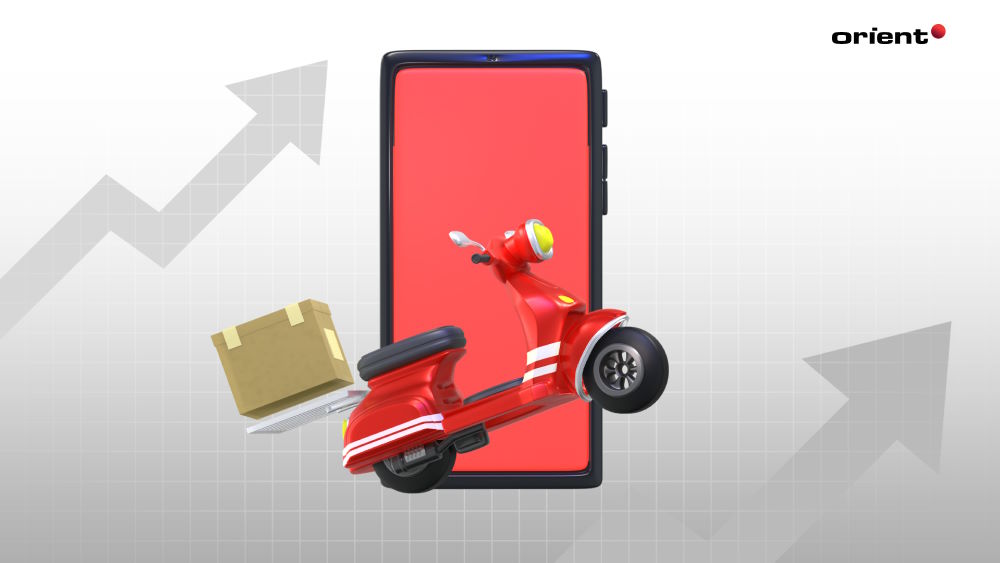
The online grocery shopping sector is experiencing an unprecedented boom. With a compound annual growth rate (CAGR) of 26.8% from 2023 to 2030, online grocery sales are set to expand significantly. In Europe, online grocery could represent 18 to 30 percent of the food-at-home market by 2030. In the first quarter of 2022, a record spike in app usage, with grocery delivery apps representing a quarter of all food and drink app downloads. This growth is driven by evolving customer behaviors, as convenience becomes a paramount concern. During the pandemic, online grocery shopping surged, and this trend is expected to continue, with scheduled delivery and instant delivery services gaining traction.
Grocery delivery services offer a multitude of benefits for consumers. They provide a convenient and efficient shopping experience, allowing users to purchase groceries with just a few clicks. These apps also offer various payment options, enhancing the ease of transactions. With features like zero operational errors and loyalty programs, consumers can enjoy a seamless shopping experience that also rewards them for their loyalty. Additionally, the shift to e-commerce has been accelerated by consumer preferences for safety and unique features like product comparisons and personalized promotions.
For businesses, grocery app development presents numerous opportunities. The rapid shift to online grocery shopping has accelerated the market’s growth by three to five years, with online penetration in grocery expected to reach 14 to 18 percent in the next few years. This shift has opened up new avenues for businesses to partner with third-party providers, expand their e-commerce offerings, and cater to the increasing demand for home delivery. As consumer preferences evolve, businesses have the chance to innovate and capture a significant share of this burgeoning market.
Before developing your own grocery delivery app, it’s crucial to understand the competitive landscape and familiarize yourself with the most popular existing apps in the market. Several grocery delivery apps have made a significant impact in the market, revolutionizing the way people shop for groceries. Let’s explore some of the top players in the grocery delivery business and how they have shaped the industry with their innovative business models and feature-rich grocery mobile apps.
Instacart has become synonymous with grocery delivery, operating in hundreds of cities across the United States and Canada. With Instacart, users can browse a wide range of grocery items from various local stores, select their desired products, and have them delivered directly to their doorstep.
By partnering with various grocery stores, Instacart provides a vast selection of products to users. Their business model focuses on real-time order tracking, personalized recommendations, and seamless communication between customers and shoppers. Instacart’s grocery store app has garnered a massive user base and has long become a go-to platform for online grocery shopping.
Shipt has gained popularity for its focus on personalized service and exceptional customer experience. Operating in thousands of cities, Shipt partners with local grocery stores to fulfill customer orders. Shipt’s business model revolves around a membership-based program where users pay a monthly or annual fee for unlimited deliveries.
The grocery mobile app offers features such as real-time order tracking, in-app messaging with shoppers, and same-day delivery options. With its emphasis on efficiency and personalization, Shipt has captured a significant share of the grocery delivery market.
As a part of the e-commerce giant Amazon, AmazonFresh has made a notable impact on the grocery delivery scene. Their business model integrates seamlessly with Amazon Prime, offering members the convenience of ordering groceries alongside other products on the platform.
With a vast selection of items, including fresh produce and pantry essentials, AmazonFresh provides a user-friendly grocery delivery app with features like timely delivery, real-time order tracking, and exclusive discounts for Prime members. Their extensive reach and robust infrastructure have propelled AmazonFresh to the forefront of the online grocery app market.
Walmart Grocery has successfully capitalized on its massive network of stores to offer a robust grocery delivery platform. Leveraging its well-established presence, Walmart Grocery allows users to order groceries online and pick them up at their nearest Walmart store or get them delivered to their doorstep.
With a focus on affordability and convenience, Walmart Grocery’s business model emphasizes price comparison, personalized recommendations, and easy reordering through their grocery mobile app. Their seamless shopping experience and competitive pricing have made them a key player in the online grocery app space.
Developing a grocery delivery app requires a systematic approach that encompasses various phases, from initial business development to technical implementation. By following these steps, you can ensure a smooth and successful process throughout the development of your grocery delivery app.
Developing a grocery delivery app involves multiple factors that contribute to the overall project cost. Understanding these factors, as well as the average cost range and potential return on investment (ROI), is crucial for businesses considering venturing into the grocery delivery app market.
The cost of building a grocery delivery app can vary significantly based on the factors mentioned above and the unique requirements of your project. On average, a basic grocery delivery app with essential features can range from $20,000 to $40,000. However, more complex and feature-rich apps can cost anywhere from $50,000 to $150,000 or more. It’s essential to consult with experienced app development third parties or professionals to get accurate cost estimates based on your specific requirements.
The ROI of grocery delivery application development can be substantial if executed effectively. By offering convenience, time savings, and a seamless shopping experience, a well-developed grocery delivery application can attract a significant user base and generate revenue through various channels. Revenue streams can include delivery charges, commissions from partnering stores, in-app advertising, and premium subscription models. The ROI depends on factors such as market demand, user acquisition and retention strategies, monetization models, and the ability to scale and expand the app’s reach.
When envisioning a grocery delivery mobile app, it’s important to partner with an experienced app development company that can help translate your vision into reality. Working with a dedicated software company allows you to stay focused on your business while professionals tackle technical challenges. A reputed partner like Orient Software has deep expertise in designing intuitive interfaces, integrating with complex backend infrastructure, and ensuring scalability.
Rather than struggling with unclear specifications or unpredictable timelines, Orient’s rigorous project management process delivers results on schedule and on budget. Our portfolio of successful grocery delivery apps will also provide valuable insights into solutions proven to grow customer bases and revenue.
Orient Software has helped launch dozens of apps just like the one you envision. Contact us today to discuss how our dedicated team of engineers and designers can build a customized native platform tailored to your unique business model and market needs.
Planning on outsourcing your mobile app project? Find out what goes into a mobile app development cost estimate and how to choose the right developer.
Is your business missing out on a secret weapon? Explore the REAL benefits of mobile apps for business and unlock explosive growth!
Take a look at the different types of healthcare software. Learn how these technologies are revolutionizing healthcare services.
Take a look at the best reading apps that are changing the way we consume content. Explore features and benefits, and find the perfect app for your reading needs.
Unsure of the best database for your iOS app? Compare SQLite, Core Data, and Realm to find the ideal match for your app’s needs.
